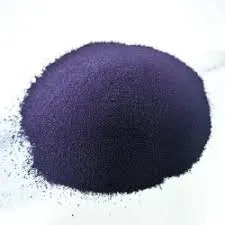indigo color in nature
The Indigo Color in Nature
Indigo, a deep and rich blue, is one of the most captivating colors found in nature. It holds a unique place in the color spectrum, lying between blue and violet. Often associated with the mystical and spiritual, indigo can evoke a sense of calm and introspection. Let's explore some of the fascinating ways indigo manifests in the natural world.
The Indigo Color in Nature
In the animal kingdom, indigo is prominent among various species. The indigo bunting, a small songbird found in North America, displays a brilliant indigo plumage that is most vibrant during the breeding season. This striking coloration plays a crucial role in attracting mates and signifies the health and vitality of the bird. Similarly, certain species of butterflies and insects flaunt indigo hues in their wings, which can serve as both camouflage and a display of fitness for potential mates.
indigo color in nature

Indigo is also a color seen in various marine environments. Some species of fish, such as the indigo damselfish, exhibit bright shades of indigo to blend into their coral reef habitats. Additionally, many deep-sea organisms, including certain jellyfish and cephalopods, can display bioluminescence that casts an indigo glow, adding to the ethereal beauty of the underwater world.
In landscapes, indigo can be found in flora such as the bluebell and the iris, which bloom during the spring and summer months. These flowers not only beautify gardens and fields but also attract pollinators, illustrating the interconnectedness of color, ecology, and biodiversity.
The indigo color in nature is not just a visual delight; it capitalizes on various aspects of survival, reproduction, and cultural significance. From dye production to animal displays, indigo is interwoven into the fabric of life, drawing our attention and admiration. Whether seen in a vibrant flower, a majestic bird, or as a dye for textiles, the color indigo continues to enchant and inspire, reminding us of the beauty that can be found all around us.
-
The Timeless Art of Denim Indigo Dye
NewsJul.01,2025
-
The Rise of Sulfur Dyed Denim
NewsJul.01,2025
-
The Rich Revival of the Best Indigo Dye
NewsJul.01,2025
-
The Enduring Strength of Sulphur Black
NewsJul.01,2025
-
The Ancient Art of Chinese Indigo Dye
NewsJul.01,2025
-
Industry Power of Indigo
NewsJul.01,2025
-
Black Sulfur is Leading the Next Wave
NewsJul.01,2025

Sulphur Black
1.Name: sulphur black; Sulfur Black; Sulphur Black 1;
2.Structure formula:
3.Molecule formula: C6H4N2O5
4.CAS No.: 1326-82-5
5.HS code: 32041911
6.Product specification:Appearance:black phosphorus flakes; black liquid

Bromo Indigo; Vat Bromo-Indigo; C.I.Vat Blue 5
1.Name: Bromo indigo; Vat bromo-indigo; C.I.Vat blue 5;
2.Structure formula:
3.Molecule formula: C16H6Br4N2O2
4.CAS No.: 2475-31-2
5.HS code: 3204151000 6.Major usage and instruction: Be mainly used to dye cotton fabrics.

Indigo Blue Vat Blue
1.Name: indigo blue,vat blue 1,
2.Structure formula:
3.Molecule formula: C16H10N2O2
4.. CAS No.: 482-89-3
5.Molecule weight: 262.62
6.HS code: 3204151000
7.Major usage and instruction: Be mainly used to dye cotton fabrics.

